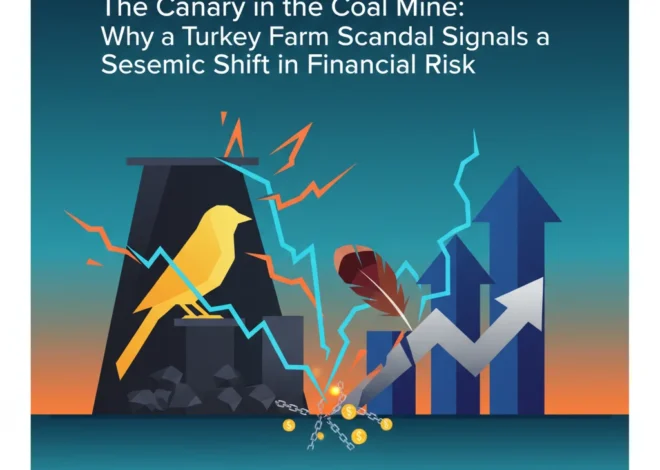
The Billions That Built the Damp: An Investor’s Post-Mortem on Failed Green Subsidies
The High Price of Good Intentions: When Green Policy Meets Economic Reality
In the grand theatre of national economics, government-led initiatives are often cast as heroic protagonists, designed to stimulate growth, address societal challenges, and steer the economy towards a brighter future. Recently, however, a stark reminder of the potential for a tragic plot twist has emerged from an unlikely sector: home insulation. A series of UK government schemes, backed by billions of pounds of public funds and intended to champion energy efficiency, have inadvertently spawned a crisis of damp, mould, and structural damage in tens of thousands of homes. This isn’t merely a housing issue; it’s a multi-billion-pound case study in fiscal mismanagement, a cautionary tale for the burgeoning world of ESG (Environmental, Social, and Governance) investing, and a stark illustration of the unforeseen ripple effects that can cascade through the broader economy.
For investors, finance professionals, and business leaders, the story of these failed insulation programmes offers critical lessons that extend far beyond the property market. It touches upon the core principles of due diligence, risk assessment in public-private partnerships, and the crucial distinction between a policy’s noble intent and its practical, on-the-ground execution. As we dissect this failure, we uncover a narrative about the economics of subsidies, the hidden liabilities in the green transition, and the urgent need for smarter, technology-driven oversight in the deployment of public capital.
Anatomy of a Fiscal Fiasco: Deconstructing the Numbers
At its heart, the initiative was rooted in sound economic and environmental logic. Improving home insulation reduces energy consumption, lowers household bills, and cuts carbon emissions—a trifecta of benefits. To accelerate this, the government deployed significant financial firepower, creating subsidy programmes to make installations affordable for homeowners. However, the execution has proven to be a catastrophic failure of governance.
The core of the problem, as highlighted by investigations, was a rush to deliver quantity over quality. This led to improperly installed cavity wall and loft insulation, which, instead of protecting homes, trapped moisture, prevented ventilation, and created the perfect breeding ground for damp and mould. The financial fallout is staggering. We are not talking about minor repair bills; we are looking at systemic issues that could cost billions more to rectify, potentially erasing any economic benefit the initial investment was supposed to generate. This is a classic example of a negative return on investment (ROI) on a national scale, funded by the taxpayer.
This situation serves as a powerful lesson in public finance and the economics of government intervention. While subsidies can effectively correct market failures and stimulate desired activities, they are fraught with peril if not managed with rigorous oversight. The absence of stringent quality control, accredited installer verification, and long-term accountability created a moral hazard, where the incentive was to complete jobs quickly rather than correctly. The result is a liability that now sits on the public ledger and the balance sheets of thousands of homeowners.
A Red Flag for ESG Investing: The Peril of “Green-Washing” Governance
For the modern investor, the ESG framework is an indispensable tool. Yet, this insulation debacle is a textbook example of what happens when the ‘E’ for Environmental is pursued without a robust ‘G’ for Governance. The investment thesis was simple: fund a green initiative to achieve environmental goals. The stock market often rewards companies and policies with strong green credentials. However, this case proves that without airtight governance, the entire structure can collapse, turning a perceived asset into a significant liability.
Investors pouring capital into green bonds, sustainable infrastructure funds, or companies involved in the green economy must look beyond the glossy marketing brochures. The critical questions are not just “what” is being done, but “how” it is being done. Who is providing oversight? What are the quality control mechanisms? What are the long-term liabilities and accountability frameworks? This insulation crisis demonstrates that poor governance can completely negate environmental gains and create unforeseen social costs (‘S’), such as negative health impacts from mould and financial distress for affected families.
Let’s visualize the stark contrast between the policy’s promise and its painful reality.
| Promised Outcome (The ESG Pitch) | Actual Outcome (The Governance Failure) |
|---|---|
| Economic Stimulus: Billions injected into the construction and green trades sector. | Economic Drain: Billions in initial spending followed by billions more required for remediation, litigation, and health costs. |
| Environmental Benefit: Reduced national carbon footprint and energy consumption. | Environmental Liability: Wasted materials, carbon-intensive repair work, and a public loss of faith in green initiatives. |
| Social Good: Lower energy bills and warmer homes for thousands of families. | Social Harm: Homes rendered unsafe by damp and mould, leading to health problems and significant property devaluation. |
The failure underscores a maturing reality in the world of finance: ESG is not a simple checklist. It is a complex, interconnected system where a weakness in one pillar can undermine the entire investment. This incident should prompt a re-evaluation of risk models for government-backed green projects, with a heavier weighting placed on implementation and governance frameworks.
The Macroeconomic Ripple Effect: From Damp Walls to Banking Risks
A common mistake in economic analysis is to view such an event in isolation. The reality is that the impact of tens of thousands of damaged homes radiates outwards, touching multiple sectors of the economy.
- The Property Market: Homes affected by systemic damp and mould suffer significant devaluation. This creates a class of homeowners who are effectively trapped, unable to sell without incurring a massive loss and unable to afford the extensive repairs. This localized property blight can depress regional housing markets.
- The Banking and Mortgage Sector: Financial institutions holding mortgages on these properties are now exposed to higher risk. The loan-to-value (LTV) ratios on these assets have worsened overnight. There is a risk of increased defaults from homeowners facing crippling repair bills. Banking and lending institutions may need to re-assess their risk exposure in postcodes with a high concentration of these government-backed installations.
- The Insurance Industry: A wave of claims is inevitable, but many insurance policies have exclusion clauses for issues stemming from poor workmanship or gradual damp. This will lead to protracted legal battles, increasing operational costs for insurers and leaving many homeowners without a safety net.
- Public Health and the Economy: The health consequences of living with damp and mould are well-documented, leading to respiratory illnesses and other conditions. This places an additional, long-term burden on public health services, translating into a direct cost to the national economy and a loss of productivity. According to a government-commissioned report, the cost to the NHS of treating illnesses associated with poor housing is estimated at £1.4 billion per year, a figure certain to be exacerbated by this crisis.
–
–
–
This chain reaction illustrates a fundamental principle of economics: no part of the system is truly isolated. A failure in construction oversight becomes a risk for the banking sector, a liability for the insurance market, and a drain on the public purse.
Forging a Smarter Future: Can Financial Technology Prevent the Next Debacle?
Looking forward, the crucial question is how to prevent a repeat of this costly failure. This is where the intersection of public policy and modern financial technology (Fintech) offers compelling solutions. The core problem was a lack of transparency, verification, and accountability. Fintech and blockchain technologies are specifically designed to solve these challenges.
Imagine a future subsidy programme managed not through bureaucratic paperwork, but through a transparent, distributed ledger. Here’s how it could work:
- Blockchain for Supply Chain & Accreditation: A blockchain-based system could track certified insulation materials from factory to installation, ensuring substandard products are not used. Installer credentials could be logged as non-fungible tokens (NFTs), providing an immutable record of who is qualified to perform the work.
- Smart Contracts for Payments: Instead of lump-sum payments, funds could be held in escrow and released via smart contracts. Payments would be automatically triggered only when specific, verifiable milestones are met: e.g., an independent, certified inspector digitally signs off on the quality of the work using a cryptographic key. This removes the incentive to cut corners.
- Fintech Platforms for Transparency: A centralized fintech platform could provide all stakeholders—from government administrators to homeowners—with a real-time dashboard tracking the project’s progress, funding, and quality assurance checks. This transparency creates powerful accountability.
–
–
While this may sound futuristic, the underlying financial technology exists today. Implementing such systems requires an upfront investment in digital infrastructure, but as this multi-billion-pound crisis shows, the cost of not doing so is exponentially higher. This is a clear area where innovative thinking in fintech and trading systems can be applied to public finance for massive efficiency gains and risk reduction.
Conclusion: A Lesson Written in Mould, Paid for in Billions
The story of the UK’s faulty insulation schemes is a sobering tale of good intentions gone awry. It is a stark reminder that in the complex machinery of the economy, the ‘how’ is just as important as the ‘what’. For the financial world, the lessons are clear: public spending without rigorous oversight is a high-risk investment. ESG principles are meaningless without a foundation of strong governance. And macroeconomic risks can emerge from the most unexpected of places—even from within the walls of our homes.
As we continue to navigate the challenges of economic uncertainty and the green transition, this episode must serve as a blueprint for what to avoid. The future of successful public policy and profitable, sustainable investing will depend on embracing transparency, enforcing accountability, and leveraging technology to ensure that the billions we invest in building a better future don’t end up simply subsidizing a more expensive and damaging version of the past.


